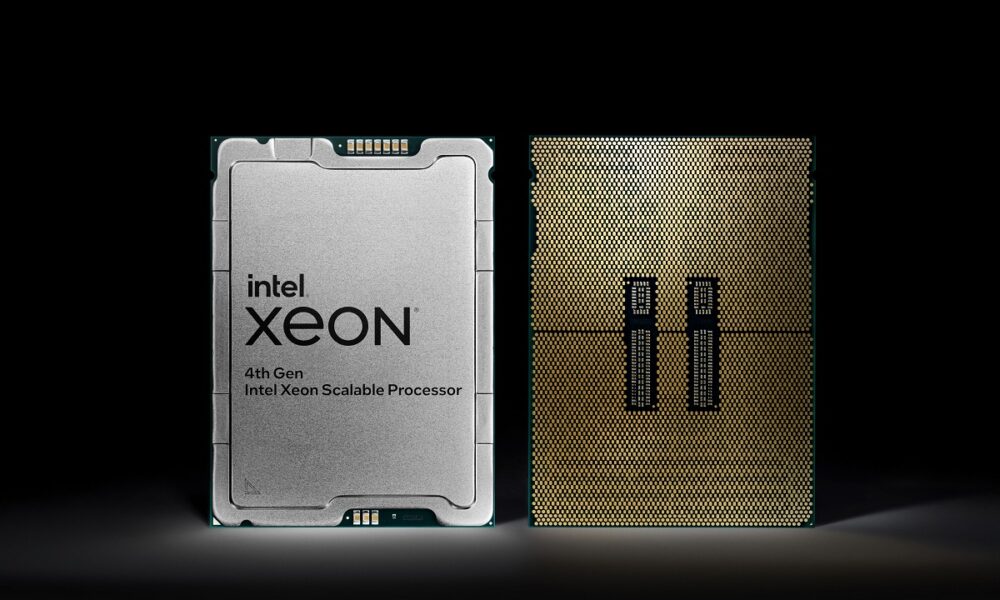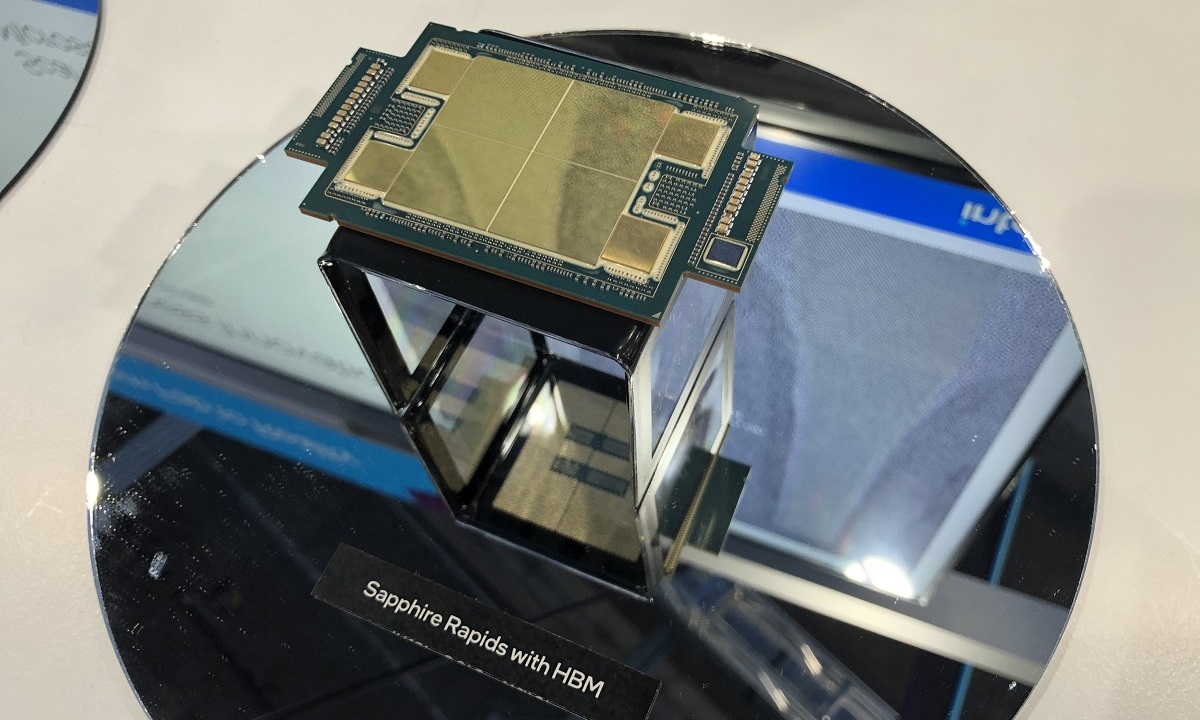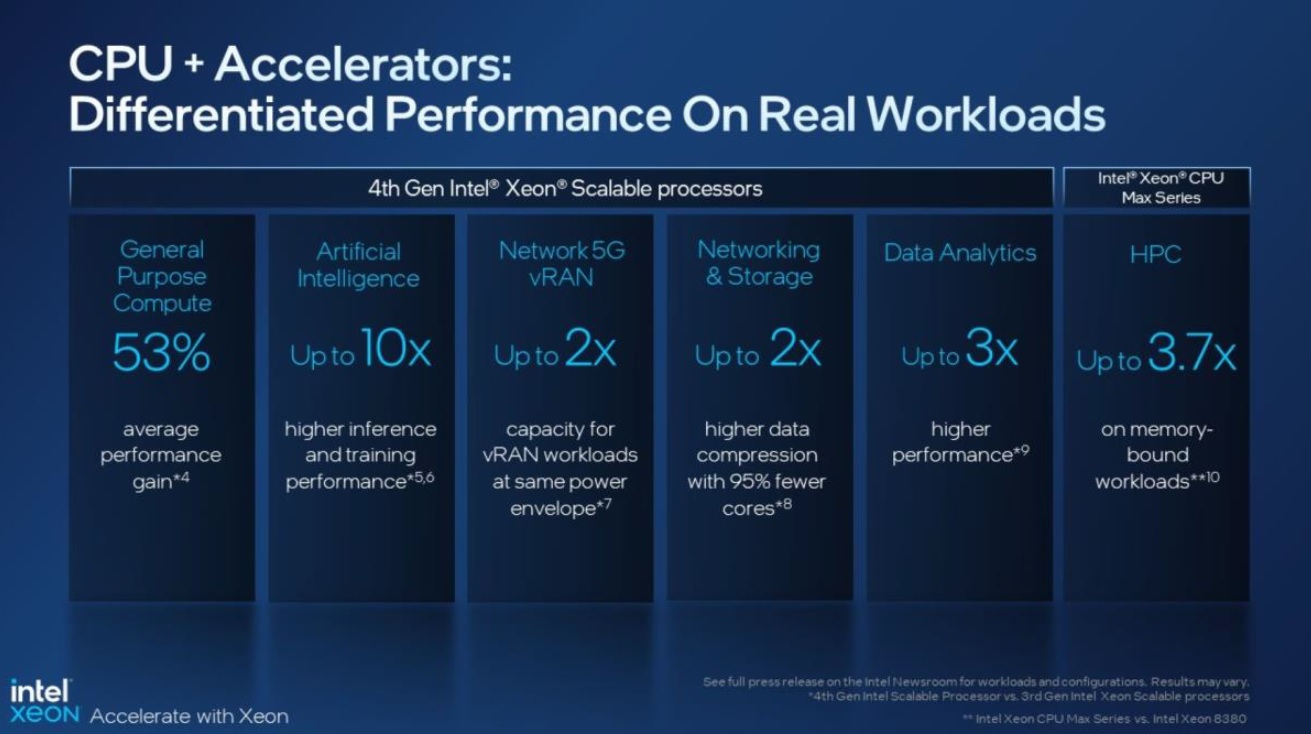
As planned, Intel today launched the Xeon Sapphire Rapids, as well as its Max Series CPUs and GPUs, three new generations of products with which the chip giant has managed to raise the bar in the professional sector, thanks to a Significant performance improvement that goes beyond raw horsepower and that has been possible thanks to specialization.
Intel Xeon Sapphire Rapids processors offer all the value of your highly scalable platformthe support of the latest industry standards (DDR5 and PCIe Gen5 memory) and CXL 1.1, an alternative protocol that allows creating a coherent memory space between CPUs and accelerators using the same physical layer as the PCIe standard, and that is capable of reducing both latency and total cost of ownership.
All Intel Xeon Sapphire Rapids processors, and Max Series versions, feature different units of acceleration that are key to improve the performance of various tasks, including everything from artificial intelligence to data analytics, security, networking, storage and also high performance computing. The Max Series versions differ by having integrated HBM2e memory.
Key features of the Intel Xeon Sapphire Rapids and Max Series
- Golden Cove-SP architecture with up to 60 cores and 120 threads per socket.
- «MCM» (multi-chip module) design that combines up to four interconnected blocks in the standard version that work as a single CPU, and eight in the Max version, which adds four additional HBM2e memory packages.
- Manufactured on the Intel 7 node.
- 4800 MHz DDR5 memory support in eight channel configuration (one module per channel, 4400 MHz with two modules per channel).
- Each thread has full access to all chips, and this includes all its elements: cache, system I/O, memory, accelerators, and so on.
- Up to 80 PCIe Gen5 lanes and support for CXL 1.1.
- Up to 100 MB last level cache shared between all cores.
- Intel Virtual RAID on CPU (Intel VROC), which eliminates the need for a separate RAID card.
- Improved bandwidth in multi-socket configurations thanks to Intel UPI 2.0, which amounts to 16 gigatransfers per second (GT/s).
- Intel Speed Select Technology, which allows you to configure the CPU to meet specific workloads more efficiently.
- AVX-512 instruction support, deep learning acceleration and inference through Intel Advanced Matrix Extensions (Intel AMX), improved performance of storage drives, networking, and data-intensive tasks through Intel Data Streaming .
- Intel Dynamic Load Balancer (Intel DLB) technology, which improves efficiency by dynamically distributing the workload across CPU cores based on how the workload itself evolves.
- Intel In-Memory Analytics Accelerator (Intel IAA), which improves performance on analytics and database tasks by offloading CPU cores for specific tasks.
- Intel Crypto Acceleration, which reduces the penalty of working with encrypted data and improves performance with a variety of workloads, including Secure Sockets Layer (SSL) servers, 5G, Virtual Private Networks (VPNs), and firewalls.
- Intel QuickAssist Technology (Intel QAT), which accelerates performance in data encryption, decryption and compression tasks, freeing the processor from this type of load.
- Max Series CPUs also feature up to 64 GB of onboard HBM2e memory.
As you may have imagined, all these improvements translate into a huge leap in terms of performance. According to Intel, the new Xeon Sapphire Rapids processors outperform 53% performance on general purpose tasks of the previous generation, but if we look at the performance values in specific tasks, such as artificial intelligence, we will realize that this new generation can multiply up to ten times the performance of the Intel Xeon Ice Lake-SP.
In terms of efficiency, the improvement is also very marked. Intel says we can wait 2.9 times higher performance per watt with the new Xeon Sapphire Rapids in specific workloads (always compared to the previous generation) thanks to the integrated accelerators, and up to 70 watts less consumption per CPU using the optimized power mode, which means minimal performance loss.
Intel will release a total of three ranges of Xeon Sapphire Rapids processors that we can see perfectly defined in the image that you will find just above these lines. The Platinum series will be the top-of-the-range option, and will be accompanied by the Gold and Silver ranges, the latter being the cheapest of the three.
The Santa Clara company has also confirmed that AWS caliber giantsCisco, Dell Technologies, Dropbox, Ericsson, Fujitsu, Google Cloud, Hewlett Packard Enterprise, IBM Cloud, Lenovo, Microsoft, NVIDIA, Oracle Cloud, RedHat, SAP, SuperMicro, Telefonica and VMware, among others, have opted for its new generation of Xeon Sapphire Rapids processors.
As for the Max Series GPU, this new graphics solution derives from what we used to know as Ponte Vecchio. It is manufactured in the 7 nm node, adds more than 100,000 million transistors in its 47 blocks of graphics cores (“tiles”) and promises to achieve performance 12.8 times greater than the previous generation in LAMMPS molecular dynamics simulatoras long as it is accompanied by a Xeon Max Series CPU.
The new Intel Xeon Sapphire Rapids processors will also be accompanied by Intel On Demand, a service that will allow you to expand, improve and update the most important features of the hardware accelerators that include these new processors, such as Intel Dynamic Load Balancer, Intel Data Streaming Accelerator, Intel In-Memory Analysis Accelerator, Intel Quick Assist Technology and Intel Software extensions Guard, all under one licensed activation model.
More information: Intel.







